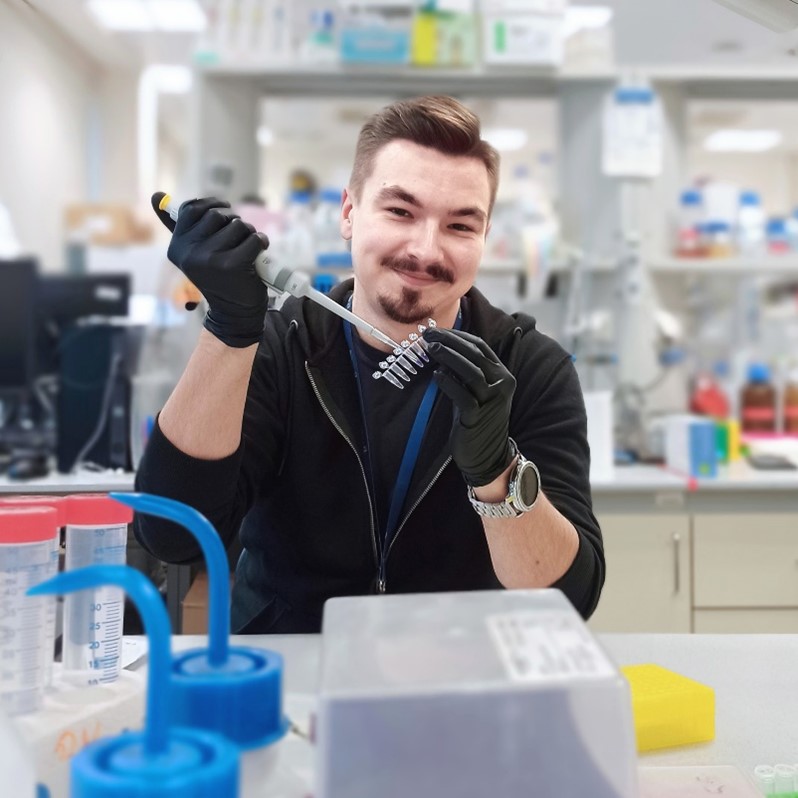
Hypusination is a post-translational modification that has been observed in only one eukaryotic protein – eukaryotic initiation factor 5A (eIF5A). It is a two-step process catalysed by two enzymes, namely deoxyhypusine synthase (DHS) and deoxyhypusine hydroxylase. The hypusine residue in eIF5A promotes translation elongation by facilitating peptide bond formation at ribosome stalling sites, e.g. polyproline stretches. This unique PTM is indispensable for translation and the lack of it is lethal to the developing mammalian embryo. Not surprisingly disturbances of this process lead to serious repercussions. Despite that, the regulation of hypusination remains elusive. So far the phosphorylation of DHS has been described. However, its role is still unclear.
As DHS is the first and rate-limiting enzyme of this process, mechanisms affecting its activity are important for the whole process. Therefore, the main goal of this project is to characterize the regulation of the first step of hypusination by protein kinases that phosphorylate DHS or interact with it directly. Within the proposed project, we aim to structurally and functionally characterize DHS-protein kinase interactions and study them in great detail. To elucidate the entirety of such regulatory mechanisms we will use an integrative approach comprising biochemical/biophysical analyses, structural and cellular biology.
This project should return important data on the molecular interactions involved in the control of DHS activity and thus in the regulation of hypusination. The proposed studies will allow us to derive mechanistic insight into the dynamic protein network involved in modulating this indispensable post-translational modification. Furthermore, given that the hypusination pathway has previously been proposed as a druggable target, this work may become a foundation for further translational studies.